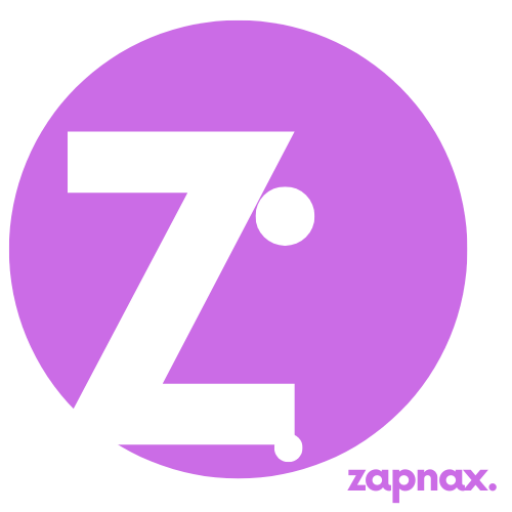Anúncios
practical guides key concepts help you make sense of complex topics and apply ideas in your daily learning without jargon or hype. Do you ever wonder which ideas really matter when you study a subject?
A concept is a mental label that groups things, from a chair to power. A key concept is one people judge most important for a task or audience. Educators studied these ideas for decades, and today that research helps you plan smarter and learn more efficiently.
This article gives classroom-tested steps, examples, and balanced views you can adapt. It is educational and cultural, not clinical. Use judgment, collect your own evidence, and adjust to context. Students, teachers, and curious readers will find useful ways to build understanding.
Be mindful: try methods responsibly and balance screen time with real-life practice so your learning journey stays steady. Let research inform you, but keep an open mind and grow understanding step by step.
Introduction: practical guides key concepts in your daily learning
Today, teachers and learners need clear frameworks that cut through clutter and save time. Past research on concept-based teaching now meets modern classrooms and workplaces. This matters because a shared language reduces confusion and helps you focus on what truly matters in a subject.
Anúncios
Why this matters now
Research over decades shaped how we think about learning. Now you face faster information, more tasks, and less margin for wasted time. Using simple concept labels can make school and work routines easier to follow.
How this guide helps you apply ideas responsibly
Try small changes first. Gather notes, reflect on results, and scale only if an approach improves understanding. This reduces risk and keeps your mind focused.
What you’ll learn and what we won’t promise
You’ll find clear definitions, planning tools, behavior supports, TOK applications, media balance tips, and templates to adapt. We won’t promise guaranteed grades or one-size-fits-all fixes. Context and teaching conditions matter.
Who this is for: students, teachers, and curious readers
This content helps students and teachers use the same language to set goals. Ask yourself: which one practice will you test first, and how will you know it helped your understanding?
- Do short check-ins over time.
- Share insights with peers at school or work.
- Protect focus by clarifying the point before you start.
Practical guides and concepts: clear definitions, simple examples
A concept is a simple mental shortcut that turns many examples into one usable idea. You might start with a chair: seats of many shapes and sizes all fit the same label. From there you move to abstract ideas like power or cause.
What a concept is (from “chair” to “power”)
A concept helps you sort the world so you can act and talk faster. Research on category learning (Murphy) shows people first use concrete examples, then form broader categories over time.
What makes a concept “key” in a subject
Groups pick which ideas matter for their goals. In one class a list might include place, chronology, or ecosystem; in another, the list looks different because the discipline and audience differ.
- Classroom example: ask students to write a short paragraph on cause and consequence and score a quick exit ticket.
- Compare lists across departments to spot culture and perspective differences.
- Ask this question when planning: which concept best organizes the knowledge you want learners to use?
“Conceptual and factual knowledge together give learners access to powerful knowledge.”
Practical guides key concepts: mapping substantive, second-order, and threshold ideas
Map how ideas function in a subject by separating content facts from the thinking moves that organize them. This helps your planning and makes learning clearer for students.
Substantive vs. second-order concepts with classroom examples
Substantive items are the topics you teach—river, trade, or ecosystem. Second-order ideas are the tools historians or scientists use, like cause and consequence or change and continuity.
In a history lesson you might use a river system as the substantive focus while using the second-order idea of change to frame sources and discussion. Joseph Schwab’s work supports this distinction.
Threshold concepts: the “doorway” to new understanding
Threshold concepts (Meyer & Land) transform the way a learner sees a field. Examples include opportunity cost in economics or sustainability in geography.
These ideas can feel confusing at first. Revisit them across units and use simulations so students cross the doorway.
Common misconceptions to avoid when choosing ideas
- Not every useful term is a grand theme; concrete items matter for building knowledge.
- There is no universal list—departments align choices to their goals and culture.
- Vocabulary alone is not understanding; teach terms and the organizing ideas together.
- Supporting concepts are stepping stones, not unimportant extras.
Tip: Use quick-writes or brief essay checks to gather evidence that students can apply a second-order idea to new content.
Plan with balance: aligning knowledge, concepts, and skills over time
Good planning balances what students know, the organizing ideas they use, and the skills they must build. Start by listing the knowledge, the concept that organizes it, and the skills students will use. This makes the unit shape visible and fair.
Medium-term planning: enquiry sequences that build depth
Create an enquiry with a sharp question. Example: Where should a family relocate in the USA? Use that question to drive research, comparison, and decision-making.
Map daily lesson arcs that add new evidence each session. End with an authentic outcome—a short report, poster, or podcast—so students must use concept language and skillful explanation.
Long-term progression: revisiting and sequencing concepts
Schedule revisits so understanding grows from simple to complex. Position threshold moments when students have enough prior knowledge to cross into deeper understanding.
- Make one-page teacher checklists with success criteria.
- Ask students to reflect: which concept helped your thinking and why?
- Align sequences across grades, but adapt to your school and discipline.
“Enquiry sequences underpinned by second-order ideas guide learning toward authentic outcomes.”
Connect and support behavior: using the ABCs and proactive strategies
Notice the moments that lead to a student’s action; those moments are where you can guide learning and calm. The ABC model helps you do that. It names the Antecedent, Behavior, and Consequence so you can see patterns and act early.
ABCs (Antecedent-Behavior-Consequence) in plain language
The antecedent is what happens before an observable behavior. The behavior is the action you see. The consequence is what follows, and it shapes future actions.
Antecedents that set students up for success
Teach short routines and post three to five expectations. Practice the start of each activity with quick reminders. Make the room calm and predictable.
Specific praise and healthy positivity ratios
Use specific praise that names the behavior and the expectation it met. Aim for more positives than corrections for each student. This way the mind links good actions to attention.
Coaching responses to errors without escalation
Respond to errors like a coach. Stay neutral, label the slip, model the replacement, let the student try again, then praise progress. This keeps teaching focused on learning, not blame.
Tiered supports with intent
When students need more, intensify supports: frequent praise, targeted feedback, token systems, or Check-in/Check-out. Teach a clear break request skill for escape-maintained behavior and celebrate appropriate use first.
“Match your response to the function of the behavior — getting attention or avoiding work — and your strategies will fit the problem.”
- Design antecedents: routines, posted expectations, brief practice.
- Use specific praise: name the action and the expectation.
- Track positive-to-corrective ratios and adjust supports.
- Choose tiered systems based on why the behavior happens.
TOK in action: using key concepts to think, write, and present
TOK invites you to test how we know things and to use clear concepts when you write or present. Below is a compact toolkit you can use in classwork, essays, and the exhibition.

The 12 core TOK concepts at a glance
- Certainty — how sure we are about a claim.
- Culture — the values that shape what counts as knowledge.
- Evidence — the support for a claim.
- Explanation — how we make sense of facts.
- Interpretation — different readings of the same data.
- Justification — reasons offered for belief.
- Objectivity — attempts to remove bias.
- Perspective — the viewpoint a person brings.
- Power — who influences knowledge production.
- Responsibility — ethical duties in claiming knowledge.
- Truth — correspondence, coherence, or usefulness claims.
- Values — priorities that affect interpretation.
Applying TOK to areas of knowledge
Connect a concept to an area of knowledge to make arguments concrete.
- Math: use certainty and justification to examine proofs and assumptions.
- History: use interpretation and perspective to weigh sources.
- Ethics: use evidence and responsibility when evaluating moral claims.
Designing a TOK exhibition
Pick one prompt, choose three objects, and write a 950-word commentary that links objects to the prompt and to concepts.
- Choose a prompt from the official list.
- Select three real-world objects that illustrate different angles.
- For each object, explain at least two concepts it evokes and tie them to the prompt.
Short TOK essay paragraph structure: claim, concept link, example, evaluation, counter-perspective.
“Justify your claims with evidence appropriate to the discipline, and acknowledge cultural viewpoints.”
Use a simple planning grid: object | concepts (2) | evidence | how it answers the prompt. Teachers can coach outlines, drafts, and peer feedback so students learn structure without formulaic writing.
- Rubric checklist: clarity of concept use, relevance of evidence, depth of evaluation, coherence across the piece.
- Credit sources for artifacts and avoid overstating what one object proves.
Play and learn: bringing balance to digital entertainment
Games and media offer small labs for trying skills, testing decisions, and learning about culture. Treat a session as a chance to notice what you gain and what you trade off.
Using key concepts to evaluate games and media
Ask simple questions: what values does this game reward? Who holds power in its community? What responsibilities do players have?
For example, check reward loops, moderation rules, and creative modes. Note three things you learn or practice and three things you lose, then decide boundaries that match your goals and subject work.
Practical ways to balance screen time with goals
- Do a quick audit: list learning gains, social benefits, and costs; set one clear boundary.
- Use time blocks with start/stop cues. Pair a short play session with a study or chore before or after.
- Set device-free places or times to protect sleep and focus, tailored to your household culture.
- Try small swaps: co-op modes for teamwork, creative modes for design, or five-minute breaks between tasks.
Track how you feel before and after play for two weeks. Share expectations with family or roommates so others support your plan.
Remember: what healthy balance looks like varies by person. Play is part of a full week—not the whole thing—and keeping perspective helps your learning and enjoyment both grow.
Use research and evidence wisely: past and present insights
Studies from education and cognitive science reveal how learners build and sometimes misbuild their understanding. Work by Murphy explains how people sort features to form a concept, and discipline studies show where misconceptions block progress.

Concept formation and misconceptions in learning
Research in geography (Walshe, 2008), chemistry (Taber, 1995), and history (Lee & Shemilt, 2004, 2009) documents common student misunderstandings in different areas.
Use short probes—two or three items—to surface prior ideas before teaching new material. Compare student explanations over time to see if understanding becomes more precise and matches subject standards.
- Look beyond scores: read writing samples and listen to oral explanations.
- Discuss patterns with colleagues to build shared supports, not blame.
- Note one actionable insight per unit and track it in a simple log.
“Content knowledge opens access to disciplinary understanding.”
Interpret findings in context. Students bring varied culture and perspective, so adapt evidence-based moves to your school and field. Stay curious, check assumptions, and adjust with care.
From idea to example: templates you can adapt today
Turn an abstract idea into a classroom task by outlining clear steps, roles, and outcomes. Below are compact, editable templates for an enquiry sequence, an ABCs checklist, and a one-page TOK essay grid. Use them as a starting point and adapt to your subject and school.
Enquiry sequence template
- Concept focus: ______
- Enquiry question: ______
- Lesson-by-lesson knowledge (4–5 rows):
- Lesson 1: ______
- Lesson 2: ______
- Lesson 3: ______
- Final product: ______ (report, recommendation, poster)
Worked example — “diversity” in U.S. geography
Role: relocation agent. Four locations: coastal city, Midwestern town, mountain county, suburban suburb. Criteria: jobs, schools, culture, climate. Students compare evidence and recommend one site with a short written reflection.
Short rubric (what strong use looks like)
- Clear concept use in explanation (2 pts)
- Relevant evidence tied to criteria (2 pts)
- Balanced evaluation and a justified recommendation (2 pts)
ABCs classroom checklist
- Post expectations and teach routines. Practice starts and transitions.
- Script specific praise: “I notice you used the concept term and gave an example.”
- Match supports to function: add Check-in/Check-out, token systems, or break cards.
- Record what each person finds reinforcing in one line.
One-page TOK essay planning grid
- Prompt: ______
- Claim: ______
- Concept link (justification, evidence): ______
- Evidence / example: ______
- Evaluation and counter-claim: ______
- Conclusion: ______
Sentence starters: “The claim rests on…”, “This example shows…, which supports the concept of…”, “A limitation is…”
Skills sidebar: pick precise examples, note limits, stay focused on evidence and concept links. Work plan: draft → peer feedback on accuracy → revise for clarity → final check against the rubric.
Templates are a starting point—adapt them to fit your classroom, discipline, and time.
Conclusion
Treat this article as a toolbox: use one of the key concepts here to organize knowledge and shape a clear way to teach or study.
Try small tests over time. Log what works and what does not, and gather simple evidence to track your understanding. Share takeaways with colleagues or classmates so your subject gains a shared language and smoother planning.
Respect culture and perspective when you adapt ideas. Remember that power, resources, and local context affect what you can do. Seek support from teachers, counselors, or school leaders when challenges go beyond classroom moves.
Balance focused work with intentional play, pick one template, one routine, and one reflection question to begin the next step of your journey. Thanks for engaging thoughtfully; steady practice and curiosity will keep progress steady.



